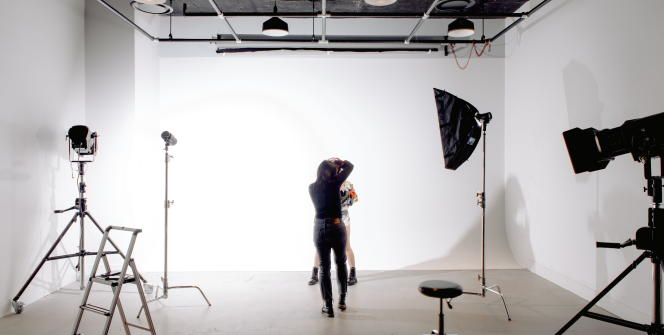Setting up a professional studio requires careful consideration of various factors, from the quality of sound to the functionality of your equipment. Whether you’re a musician, podcaster, or content creator, choosing the right studio equipment is essential for achieving your desired audio output. This post will go over a few important things to think and plan about when buying studio equipment.
Define Your Studio’s Purpose
Defining your studio’s purpose is a foundational step in the process of selecting the right equipment. The specific goals and objectives of your audio production studio will dictate the type of tools and gear you need. For example, if your studio is primarily focused on music production or audio engineering, you’ll require equipment such as high-quality microphones, audio interfaces, mixing consoles, outboard processors, and professional studio monitors. Conversely, a podcasting studio might prioritize microphones designed for spoken audio, soundproofing solutions, and podcast recording accessories. By clarifying your studio’s purpose, whether it’s music production, podcasting, voice-over work, or other audio endeavors, you can make informed equipment choices that align with your specific production goals and deliver the desired audio quality and results. This purpose-driven approach ensures that your studio is well-equipped to meet the unique demands of your audio projects.
Budget Constraints
Budget constraints are a fundamental aspect of setting up a studio, and it’s essential to establish a clear financial plan before making equipment choices. Establish your budget first by taking into account your financial capabilities and accessible resources. Once you have a defined budget, prioritize your spending by focusing on the most critical equipment that aligns with your studio’s primary purpose. While it can be tempting to purchase numerous lower-quality items, it’s often more advantageous to invest in high-quality, essential equipment that will serve your studio well in the long run. This approach ensures that your limited budget is directed toward items that significantly impact the quality of your audio production. To maximize your budget, consider both short-term and long-term needs. While immediate necessities should be addressed, also think about how your studio will evolve and expand over time. This strategic planning can help you make informed choices that balance affordability with quality, ensuring that your studio is equipped with the essentials while leaving room for future upgrades and enhancements. Additionally, keep an eye out for special offers, discounts, and bundled packages, as they can provide cost-effective solutions to fulfill your equipment requirements.
Research and Test Equipment
Research and testing play a pivotal role in the selection of studio equipment. To make well-informed decisions, engage in comprehensive research by reading product reviews, seeking recommendations from experienced professionals in your field, and exploring online forums or communities dedicated to audio production. Additionally, visiting audio equipment stores or studios to conduct hands-on testing of various items is invaluable. This tactile experience allows you to assess the equipment’s suitability, user-friendliness, and compatibility with your specific audio production needs. It’s essential to ensure that the chosen equipment aligns with your expectations in terms of quality, performance, and functionality, as this investment significantly contributes to the overall success and efficiency of your studio setup. By dedicating time to research and testing, you can have confidence in your equipment choices, knowing that they support your studio’s purpose and long-term objectives while adhering to your budget constraints.
Room Acoustics
Room acoustics are a critical aspect of any audio production studio. The quality of sound in your studio is greatly influenced by the acoustics of the space. To ensure the highest sound quality and enhance the acoustics of your room, investing time and money in learning about this is essential. This process may involve the strategic use of acoustic treatment materials, arranging your equipment effectively, and taking steps to minimize sound reflections and interference. The ultimate goal is to create an acoustically balanced environment that complements the capabilities of your studio equipment and allows for precise sound capture and reproduction, which is crucial for producing high-quality audio. By addressing room acoustics, you enhance the performance of your equipment and elevate the overall audio production standards in your studio.
Compatibility and Integration
Compatibility and integration are key factors to consider when building your studio setup. It is imperative to confirm that the different equipment components you choose are compatible with one another. This includes not only the connection of hardware but also the integration of software and digital components. Compatibility issues can lead to technical challenges, reduced efficiency, and potential workflow disruptions in your studio. To avoid these problems, thoroughly research and choose equipment that offers the necessary connectivity options and software integration. This will streamline your workflow, enhance efficiency, and prevent compatibility headaches in the long run, ensuring that your studio operates smoothly and effectively.
Conclusion
Purchasing studio equipment is a significant step in creating a successful audio production environment. Whether you’re aiming to record music, produce podcasts, or engage in any other audio-related activity, these five considerations are essential. By defining your studio’s purpose, setting a budget, conducting thorough research, and optimizing your room’s acoustics, you can ensure that your studio is well-equipped for top-quality audio production. Always keep in mind that having the appropriate tools can help you achieve all of your creative objectives.

Leave a Reply